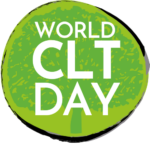The Role of Nonprofits
As in other areas of community economic development, the nonprofit sector has a special role to play when it comes to kick-starting urban farming. Urban agriculture is a relatively low-cost approach to community revitalization, with the cost of investment lower than in other forms of redevelopment. At least in principle, an urban farm can be built more quickly and cheaply than housing or mixed-use development. In practice, of course, the fact that urban farming business models are still being tested means they can encounter delays in raising capital and satisfying regulatory requirements.
Nonprofit urban farms, therefore, can be seen as effectively paving the way for subsequent private-sector development. Beyond farming, this is the historic role that nonprofits have assumed in community economic development projects. For-profit housing developers, for example, may be hesitant to enter a neighborhood in which there is a high perception of risk. They will wait until nonprofits have worked out regulatory wrinkles, and proven that demand is sufficient to justify investment of capital in for-profit projects.
Affordability
This parallel between housing and food production suggests why nonprofits – in the form of land trusts, training sites, and incubator farms – could be an essential provider of affordable urban farmland. In “unaffordable” housing markets, by analogy, the provision of affordable housing is not possible without some subsidies. Nor can affordable housing be maintained in the face of a rising market without some kind of controls, such as resale restrictions, that ensure long-term affordability.
Unlike housing, there is no standardized definition for describing affordable urban farmland. In housing, affordability is most frequently described in terms of a ratio of gross income, where housing is considering affordable as long as no more than one-third of gross household income goes toward housing-related expenses. In the U.S., targeted household income is expressed as a percentage of area median income (AMI), which ranges anywhere anywhere from 30% AMI for very low income households to 120% for moderate income households living in hyperinflated markets such as the Bay Area. For urban farmland, there is no comparable framework.
Instead, affordable urban farmland is often described simply as land that is “free or cheap”, with little description beyond that. And even free land is rarely free, as it will almost always need some level of soil remediation or installation of infrastructure — not to mention covering the costs of transaction fees. Much of the time, affordability is defined on a case by case basis, relative to the specific parcel of land, need for remediation and infrastructure, crops being grown, and net revenues that a grower would need to generate.
But in each case, in urban land markets where space for farming is unaffordable, at least given current revenue models for urban farms, some measure of subsidies could be justified to make land available for growers to learn basic skills and “kick the tires” on their emerging business models. As the market develops, the most skilled farmers may be able to afford land at something close to market rates (outside of hyperinflated real estate markets), but some controls would likely remain justified to provide space for new entrants into the urban farming sector, and to ensure that all neighborhoods enjoy the community benefits that urban agriculture makes possible.
Nonprofits as Partners, Not Predators
Because low-income minority neighborhoods so often are characterized by what they lack, it is easy to ignore what they have. For nonprofits, these parts of the city are fertile ground for planting new initiatives, and supporting or expand programming. Nonprofit leaders often act with good intentions, aiming to support community revitalization; but there are also pressures to respond to funders’ expectations that programs will be targeted at the “most needy” communities, which can be used as test beds for developing “scalable” or “replicable” interventions. At their grandest, whole cities – such as Detroit, or New Orleans after Hurricane Katrina – have been imagined as laboratories for experimenting with the types of interventions favored by donors and the non-profit organizations they fund, with community residents, at times, left feeling more like lab rats than partners.
Other chapters in this volume discuss the ways in which urban agriculture has the potential to be sector in which people resist – or reproduce – the types of oppression that have been woven into the history ofthe United States. In what follows, we seek to identify how land tenure models in particular can be structured to ensure that urban farming nonprofits are partners of the communities in which they work, rather than predators.

